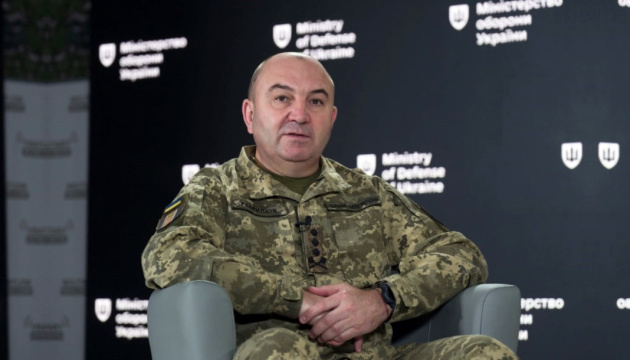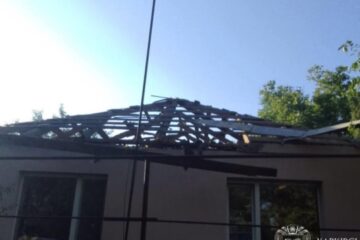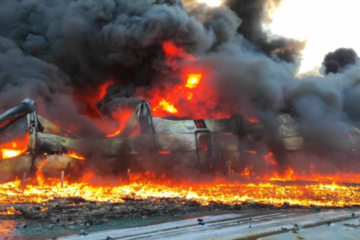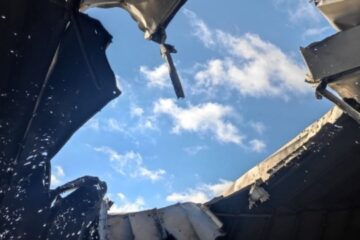
Quite importantly, the Europeans have finally realized that Ukraine is not a burden, but their shield. And by investing in the Ukrainian defense industry, they are actually investing in their own security.
In war, people and weapons are what matter most. The higher the rate of weapons production, the more capabilities our soldiers will have. The sooner we achieve the highest possible self-sufficiency in meeting the needs of the Armed Forces of Ukraine in weapons, the stronger Ukraine’s position will be both on the battlefield and at the negotiating table.
In recent years, the Ukrainian defense industry has demonstrated significant growth in production, evolving into a flexible progressive ecosystem. Unfortunately, not as quickly as we would like, and there are objective reasons for this. It’s like a long-standing disease. After all, the domestic defense industry has had for many years to fight for survival on its own. Government contracts did not exceed 5-15 percent of arms manufacturers’ portfolios. Ukraine’s stockpiles of weapons, ammo, and equipment had been rapidly depleted. We are currently paying a huge price for this policy of disarming the Ukrainian military.
Before the war, most of defense industries in Ukraine were owned and run by the government. They were severely dependent on government funding, did not have operational flexibility, and responded poorly to market challenges. Currently, most arms manufacturing companies are owned privately. Overall, approximately nine hundred companies are operating within the defense industrial sector in Ukraine.
The domestic defense industry has gained significant momentum in recent years, especially in the sectors of Soviet-era artillery ammunition, armored vehicles, and ATGMs among others. Ukraine has launched domestic production of unmanned systems, electronic warfare equipment, and armored personnel carriers.
I would note that a country’s defense industrial capacity is evaluated not only in terms of the ability to scale up production of particular types of military weapons and equipment systems, but also the ability to develop and manufacture innovative weapons technologies.
For your information: in 2023 and 2024, respectively, over two hundred and more than six hundred new, domestically produced weapons and equipment products had been codified and certified for operational use by the Ministry of Defense of Ukraine. The Ministry has codified and certified as many new products so far this year as it did all of the year before.
Ukrainian industries are expanding the range of armaments products manufactured domestically. Among them are high-tech products, including unmanned systems, the self-propelled howitzer system Bohdana, current-generation armored personnel carrier vehicles, and long-range weapons among others. Indeed, our allies assisted us in particular projects (establishing production of 155 mm artillery shells, implementing the FrankenSAM project to interface Patriot launchers with Soviet-/Ukrainian-made radars), but in now way does this diminish the potential held in our arms manufacturing industry. Ukraine is fully self-sufficient in production of a comprehensive range of weaponry and equipment which only few advanced economies can produce.
Ukrainians were the first in the world to start mass deploying unmanned systems on the battlefield (beginning in 2023). For the first time in the history of wars, a wholly new class of weapons — unmanned systems — has appeared on the battlefield. Today, drones are indispensable for reconnaissance and fire missions on the battlefield. Drones helped Ukraine nullify part of the Russian army’s numerical advantage in personnel and equipment.
Besides, Ukraine is recovering its missile programs. Objectively, it takes not months, but years to implement a missile program. And in Ukraine, armaments’ development had been stagnant for a long time. Therefore, we have to understand that miracles will not happen by themselves, we have to make them happen. Also, we need to realize that in implementing R&D and production programs on advanced long-range strike systems we have to rely on our own capabilities and resources, because, you see, nobody wants to share technologies…
It is to be understood that the countries in Europe that have the capacities to manufacture artillery systems or armored vehicles, for example, will be keen to offer us weapons and equipment they produce themselves, so that to ensure the proceeds will work for the benefit of their own economies. But we, for our part, are keen to provide a full workload for artillery and armored vehicle manufacturers of our own. Because, first, Ukrainian equipment is cheaper to produce while not being worse in terms of performance. Second and extremely important in this context is the issue of routine maintenance and repair of the delivered equipment. We will not be dependent on a foreign manufacturer for replacement parts. We will not have to drive this equipment thousands of kilometers for repairs, while saving significant funds that could otherwise be invested in important projects and initiatives.
The defense industry has already become a major driver of the national economy. A breakthrough in the industry’s development would provide a great chance for Ukraine to become a high-tech country.
Today, given the challenges and threats facing Ukraine, defense-industrial development is a matter of the country’s survival. The domestic arms industry is another front today! We must dominate in the production of drones for various purposes, must move forward in the production of long-range weapons. We need to have new tools of war and effective means the enemy does not yet have… Indeed, this goal is difficult to achieve! But we must do it. If and when we have the capabilities to deliver more long-range strikes deep into Russian territory and to paralyze the sources that finance Russia’s war in Ukraine — oil refineries, armaments factories, logistical infrastructure – the situation on the battlefield will definitely change. Our long-range weapons are the most effective tool for depleting the enemy’s offensive potential. Arsenals, military airfields in Russia’s rear regions are all our top-priority targets! We have to kill the archers instead of trying to intercept all the arrows they are launching at us.
Therefore, I reiterate it again, how long the war will last largely depends on how soon we will be able to spin up the weapons production conveyor to full speed and how soon we will be able to launch new weapons products of critical importance to us, most particularly electronic warfare systems, UAVs for various purposes, air defense systems, new long-range weapons. We also need Ukrainian Stingers, Himars, Gepards…
To make this goal achievable, Ukraine will need significant financial investments. We are therefore placing high expectations on support from our allies. It is also crucial to solicit as much domestic investment as possible to develop and expand industries dealing with military technologies. And this work is currently going on at full swing and at all levels.
Financial shortages and insufficient workforce now seriously constrain the domestic defense-industrial development, with the critical need for highly specialized professionals where the shortage is most severe.
Despite the complexity of the challenges at hand, we must devise optimum solutions that would enable the Ukrainian defense industry to develop in a sustainable way.
The experience gained by Ukrainian armaments manufacturers is of high value for partners, and especially so as they regard Russia as a genuine threat. Indeed, air raid alarms and explosions cannot be heard in their cities. But every kilometer of Ukrainian land captured by the aggressor brings threats closer to Europe. Currently, the EU countries do not manufacture weapons of war in sufficient amounts. But the Europeans have the resources and technology. This is what the Ukrainian defense industry needs.
The Europeans, importantly, have already come to realize that Ukraine is not a burden, but their shield. And by investing in the Ukrainian defense industry, they are actually investing in their own security.
Finally, I would highlight the need for the soonest possible switching from short-term planning to meet the Ukrainian military’s urgent needs to strategic planning. It is vital to define a new concept of the Armed Forces of Ukraine based on a profound review of the effectiveness of all existing inventories of weapons and equipment, including Russian ones. There is a necessity to compile a list of most promising military technologies and to invest generously in their development and production. That being said, it is extremely vital to have in place coordinated military technology and defense industrial policies, while simultaneously shoring up funding for scientific research programs and searching for new low-interest lending solutions for arms manufacturers to facilitate transition to long-term contracts. We have to come through this path!
Ivan Havrylyuk, Senior Deputy Minister of Defense of Ukraine, Lieutenant General
* Author’s opinions may not be those of Ukrinform’s editorial board
Source: War outcome will be determined by the rate of in-country weapons production



